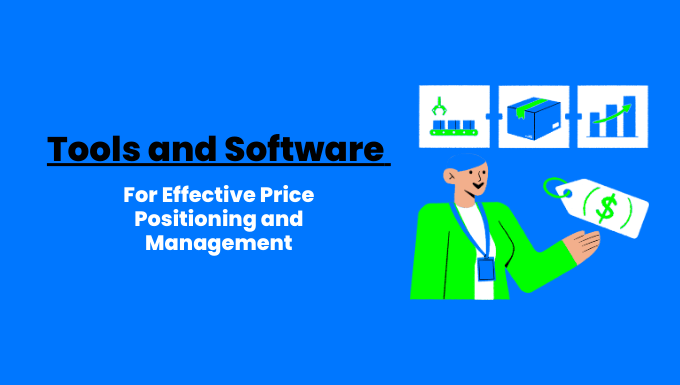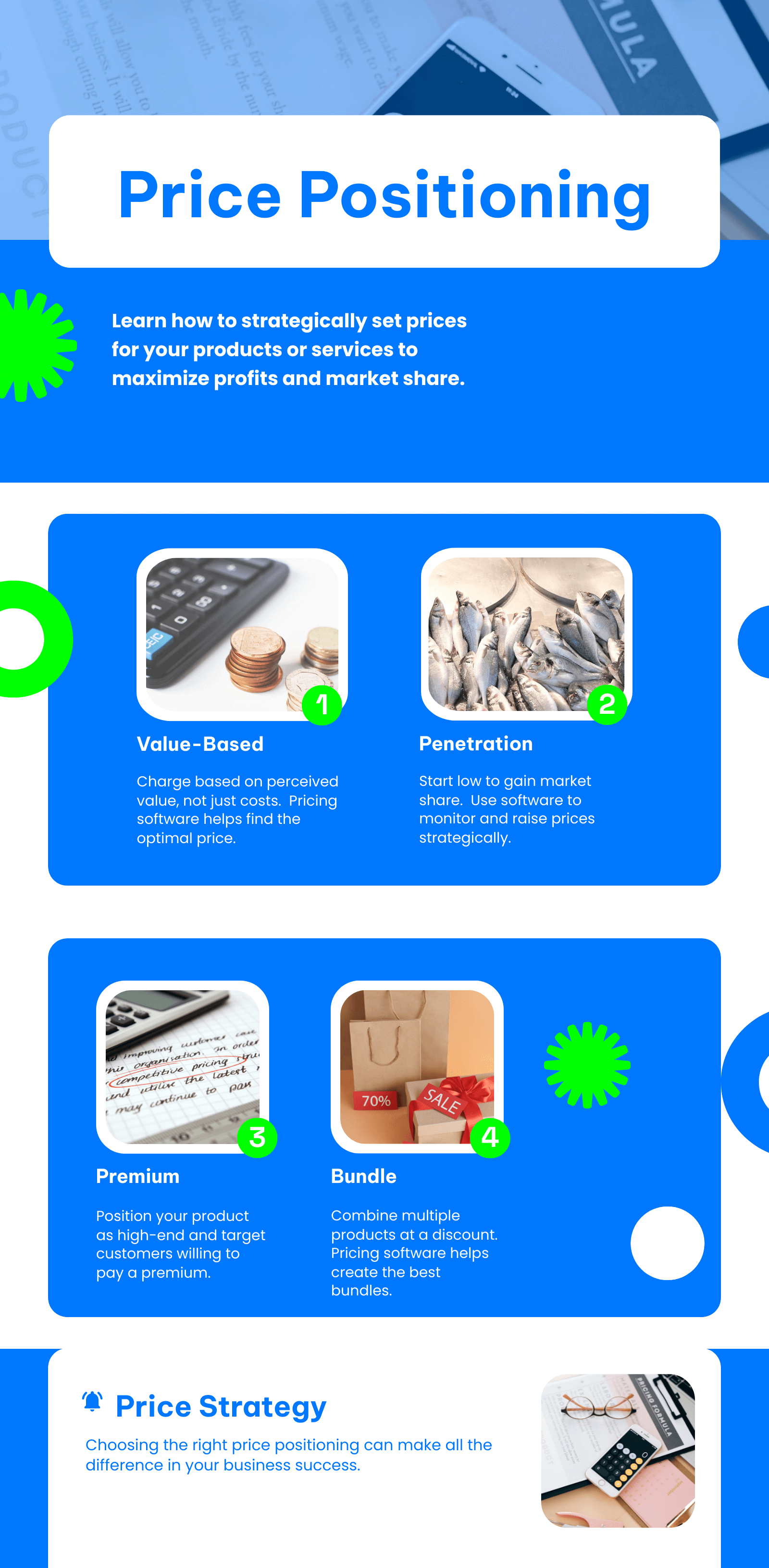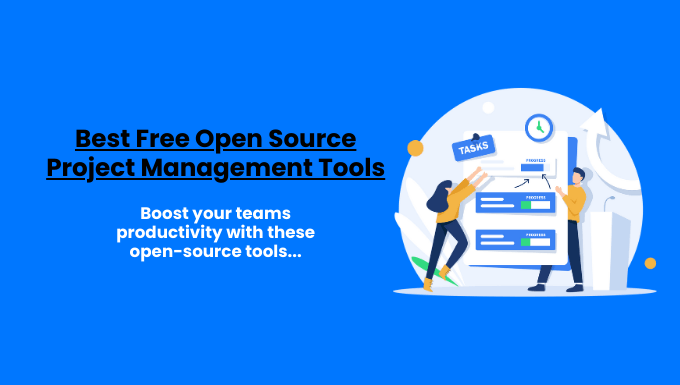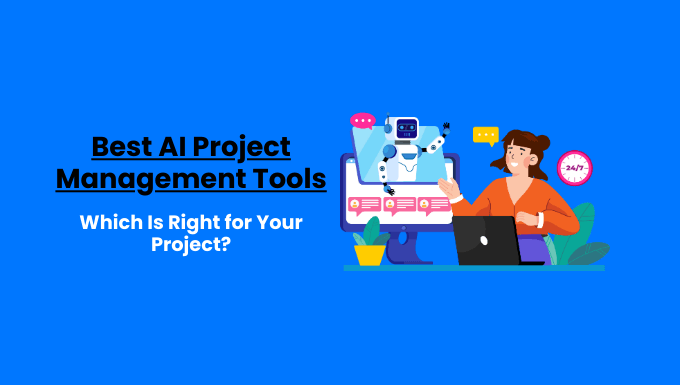Attention, entrepreneurs! Are you struggling to find the perfect price for your products or services?
Discover the game-changing tools and software for price positioning that can revolutionize your business strategy.
From dynamic pricing solutions to competitive pricing tools, these innovative technologies empower you to optimize your pricing and maximize profits.
Dive into our comprehensive guide and unlock the secrets of effective price positioning and management.
Key Takeaways:
- Leverage price optimization software to analyze market trends and set competitive prices.
- Implement dynamic pricing solutions to adapt quickly to changing market conditions.
- Utilize pricing management software to streamline your pricing processes and improve efficiency.
- Explore competitive pricing tools to stay ahead of your rivals and capture market share.
- Embrace AI-driven pricing strategies to make data-informed decisions and boost profitability.

Contents
ToggleDefinition and Significance of Price Positioning
Price positioning involves the strategic setting of prices in relation to competitors in the market. It revolves around assessing the perceived value of a product or service and pricing it accordingly to attract the target audience.
This strategic approach is pivotal as it shapes consumer perception, purchase decisions, and ultimately, the financial performance of a business.
Impact on Profitability
Effective price positioning can directly influence a company’s profitability in multiple ways:
- Higher Margins: Strategic price positioning based on the value offered enables businesses to command higher margins for their products or services, leveraging various pricing strategies and software that helps businesses adjust product prices efficiently.
- Increased Sales: Achieved through strategic use of pricing software solutions. Setting competitive prices can draw more customers, leading to a surge in sales volume and revenue.
- Brand Perception: Shaped significantly through strategic price management software applications. Proper price positioning, enhanced by price optimization software, can elevate the perceived value of a brand, empowering businesses to justify premium pricing and cultivate a loyal customer base.
Understanding Price Positioning and Management
What is Price Positioning?
When it comes to running a successful business, pricing plays a pivotal role in determining the fate of your venture.
Price positioning, simply put, refers to the placement of your product or service in the market concerning your competitors. It involves setting a price that mirrors the value you offer while also taking into account what your target customers are willing to pay.
Let’s delve deeper into this concept and explore effective strategies for price positioning.
Definition and Concepts
Price positioning goes beyond just assigning a number. It involves strategically positioning your offering in the minds of your customers through effective price execution strategies enabled by pricing software solutions.
Here are some key concepts to consider:
- Perceived Value: Customers are willing to pay more if they perceive your product or service as valuable. It’s crucial to communicate the benefits and unique selling points that set you apart from competitors.
- Price Elasticity: Understanding how sensitive your customers are to price changes can help you determine the optimal pricing strategy. For instance, luxury brands can command higher prices due to lower price elasticity among their target audience.
- Competitive Analysis: Analyzing your competitors’ pricing strategies can offer valuable insights into your market position, a task made easier with the competitive analysis tools you use. It’s vital to differentiate yourself while staying competitive, possibly by leveraging software for 2024 that offers various pricing and management features.
Strategies for Effective Price Positioning

Now that you grasp the fundamentals, let’s explore some strategies to effectively position your prices in the market:
- Value-Based Pricing: Base your prices on the perceived value of your offering rather than solely on production costs, applying insights from price optimization software to find the optimal pricing structure. This is where pricing software features become crucial. This approach enables you to extract maximum value from customers who appreciate what you provide.
- Penetration Pricing: software supports this strategy by analyzing the market and setting lower prices to gain market share. Launch your product or service at a lower price initially to gain market share and attract price-sensitive customers, using pricing software to monitor and adjust your pricing structure effectively. As you establish your presence, you can gradually raise prices, guided by insights from optimization software to maintain competitiveness.
- Premium Pricing: Position your offering as a high-end or luxury option to cater to customers willing to pay a premium for quality, exclusivity, or prestige.
- Bundle Pricing: The software used here can help determine the optimal mix of products to maximize revenue. Combine multiple products or services into a bundle and offer them at a discounted price, utilizing pricing software that offers bundle pricing capabilities. This strategy can enhance perceived value for customers and drive upsells.
Benefits of Effective Price Management
Implementing a robust price positioning strategy can bring a host of benefits to your business, including:
- Increased Profitability: By aligning prices with the value you offer, you can maximize revenue and profitability, which is a principle that software power users understand well. Customers are often willing to pay more for products they perceive as valuable.
- Enhanced Competitive Positioning: A well-crafted pricing strategy can differentiate you from competitors, establishing a unique market position. This can lead to increased brand recognition and customer loyalty.
- Customer Satisfaction and Loyalty: When customers feel they receive good value for the price they pay, they are more likely to return and become loyal advocates for your brand. Price transparency and consistency can foster trust and long-term relationships with your customer base.
6 Key Tools and Software for Price Positioning and Management
Are you eager to fine-tune your pricing strategies and outshine the competition in the ever-evolving business landscape?
Look no further! Below is a handpicked selection of top-tier tools and software that can transform your approach to price positioning and management.
Let’s explore the standout features, advantages, pricing models, and practical applications of each solution, focusing on how software offers users unique insights.
1. Prisync
- Key Features: Including pricing across different channels and the benefits of pricing software to stay competitive and profitable. Highlighting the management feature and real-time product price adjustments through pricing software. pricing software enables powerful analytics and price guidance.
- Real-time competitor price tracking
- Automated price adjustments based on set rules
- Detailed pricing analytics
- Benefits:
- Gain a competitive advantage with real-time insights provided by the best pricing software tools.
- Enhance sales and margins through optimized pricing
- Pricing Model: Incorporates management features and price list adjustments facilitated by pricing software. enhanced by the use of price management software for dynamic adjustments.
- Plans start at $59 per month
- Use Case Example:
- Software plays a pivotal role in demonstrating practical applications.
- E-commerce businesses adapt prices dynamically in response to market trends
2. Dynamic Pricing by Omnia
- Key Features:
- Advanced algorithms for price optimization
- Integration with multiple sales channels
- Customizable pricing rules
- Benefits:
- Maximize revenue with intelligent pricing strategies
- Streamline pricing processes through automation
- Pricing Model:
- Custom pricing tailored to business requirements
- Use Case Example:
- Retailers effectively managing large inventories with fluctuating demand
3. Pricefx
- Key Features:
- Comprehensive price optimization and management capabilities
- Scenario planning and simulation tools
- Integration with ERP and CRM systems is enhanced when the software utilized provides seamless compatibility.
- Benefits:
- Enhance pricing accuracy and efficiency with the deployment of price optimization software.
- Make informed, data-driven decisions with advanced analytics
- Pricing Model:
- Subscription-based; contact for details about our pricing software options. on our pricing solutions, including software solutions for price management and optimization.
- Use Case Example:
- Large enterprises optimizing pricing strategies across diverse product lines can benefit significantly from software that supports price segmentation.
4. PROS Pricing
- Key Features:
- AI-driven price optimization where software utilizes artificial intelligence to fine-tune pricing strategies dynamically.
- Market and customer segmentation tools
- Real-time pricing recommendations through pricing software solutions.
- Benefits:
- Boost profitability with AI-driven insights
- Implement personalized pricing strategies for distinct customer segments, facilitated by machine learning algorithms within pricing software.
- Pricing Model:
- Contact for pricing information
- Use Case Example:
- B2B companies leveraging AI technology to personalize pricing strategies
5. Competera
- Key Features:
- Competitor price monitoring capabilities
- Price optimization algorithms
- Analysis of revenue and profit impacts
- Benefits:
- Acquire valuable competitive insights through comprehensive data
- Optimize prices for maximum revenue generation
- Pricing Model:
- Custom pricing based on specific business needs
- Use Case Example:
- Retailers adjusting prices based on competitor actions
6. Intelligence Node
- Key Features:
- Real-time competitive pricing data
- Market trend analysis utilizing machine learning and pricing software to predict future price movements
- Pricing strategy recommendations
- Benefits:
- Stay ahead with real-time market insights
- Develop strategic pricing models supported by data, leveraging software as a tool for in-depth market analysis and strategy development.
- Pricing Model:
- Subscription-based; contact for details
- Use Case Example:
- Brands maintaining a competitive edge with up-to-date pricing data
Strategies for Effective Price Positioning
Market Research and Analysis
Understanding economic factors and consumer behavior is essential for effective price positioning. Dive into market research to uncover valuable insights that shape your pricing strategy.
Tools like surveys, focus groups, and data analytics can help you gather information on market trends, competitor pricing, and consumer preferences. Analyzing this data empowers you to make informed decisions on how to position your prices in the market.
Target Market Analysis
Identifying your target market and understanding their preferences and price sensitivity is crucial for setting the right price for your products or services. One effective method to gain insights into customer purchasing decisions is through conjoint analysis.
This technique, supported by optimization software, helps you understand how customers prioritize different features and attributes when making buying choices.
By leveraging this information, gathered through software solutions, you can tailor your pricing strategy to meet the needs and expectations of your target audience.
Competitive Analysis
Conducting a thorough competitive analysis is vital for effective price positioning. By performing a SWOT analysis (Strengths, Weaknesses, Opportunities, Threats) and creating a competitive matrix, you can identify your competitors’ pricing strategies, strengths, and weaknesses.
This information enables you to differentiate your offerings and set competitive prices in the market.
Utilizing tools for ongoing competitive monitoring and analysis, such as pricing intelligence software, provides real-time data on competitor pricing changes, allowing you to adjust your prices accordingly.
Implementing Price Positioning and Management Tools
Integration with Business Processes
When it comes to effectively managing pricing strategies, integrating price positioning tools with your existing ERP and CRM systems using pricing software enables a seamless workflow.
By aligning these tools, you can streamline workflows, enhance decision-making processes, and ultimately drive profitability through the use of pricing software solutions.
Aligning pricing tools with ERP and CRM systems
One key step in integrating price positioning tools with your ERP and CRM systems is to ensure compatibility and data synchronization between these platforms.
This can involve: deciding if the tools and software available meet the project’s requirements.
- Mapping pricing data fields between systems to ensure consistency and accuracy.
- Implementing APIs or middleware solutions to facilitate communication between pricing tools and ERP/CRM systems.
- Conducting thorough testing to identify and resolve any integration issues before full deployment.
Streamlining workflows for pricing decisions
By integrating pricing tools with your business processes, you can streamline workflows and improve efficiency in making pricing decisions, using price management software for comprehensive control over every aspect of pricing.
This can involve:
- Automating pricing updates based on predefined rules or algorithms.
- Implementing approval workflows to ensure pricing changes are reviewed and authorized by the appropriate stakeholders.
- Utilizing real-time analytics to monitor pricing performance and make data-driven decisions.
Ensuring team proficiency with new tools
Implementing new pricing tools is only half the battle; ensuring your team is proficient in using these tools, which requires comprehensive price management software training, is equally important.
To achieve this, consider:
- Providing comprehensive training sessions to familiarize team members with the features and functionalities of the new tools.
- Offering ongoing support and resources to address any questions or challenges that may arise during the adoption process.
- Encouraging feedback from team members to continuously improve the usability and effectiveness of the pricing tools.
Best practices for adoption and implementation
To maximize the success of implementing price positioning and management tools, consider the following best practices:
- Define clear objectives and KPIs to measure the impact of the new tools on pricing performance.
- Engage key stakeholders early in the process to gain buy-in and support for the implementation, where HR software can be particularly useful.
- Monitor and evaluate the effectiveness of the pricing tools regularly to identify areas for improvement and optimization.
Common Pitfalls and How to Avoid Them
When it comes to building a successful business, entrepreneurs often encounter common pitfalls that can hinder their progress. In this article, we will delve into these potential challenges and provide practical solutions to help you navigate through them effectively.
Let’s explore these pitfalls and learn how to avoid them.
Lack of Market Research
One of the most critical mistakes entrepreneurs make is jumping into a business venture without conducting thorough market research or utilizing software that helps businesses analyze price positioning. Without a clear understanding of your target audience, competitors, and industry trends, you are essentially operating in the dark.
Research by CB Insights reveals that 42% of startups fail due to a lack of market need for their products or services. To steer clear of this pitfall, consider the following actions:
- Conduct comprehensive market research to identify your target audience and their needs.
- Analyze your competitors to gain insights into their strengths and weaknesses.
- Stay abreast of industry trends to anticipate changes and seize new opportunities.
Setting the Wrong Price Point
Pricing your products or services appropriately is a delicate balancing act. Pricing too high may deter customers, while pricing too low could undervalue your offerings.
According to McKinsey & Company, a mere 1% price increase can result in an average profit boost of 11%. To avoid setting the wrong price point, take these steps into account:
- Calculate all your costs, including production, overhead, and desired profit margin.
- Study your competitors’ pricing strategies to position your offerings effectively.
- Experiment with different price points through methods like A/B testing to determine the optimal pricing strategy, using pricing software allows for sophisticated analysis.
Neglecting Customer Feedback
Customer feedback is a goldmine of information for your business, especially when analyzed with the best pricing software. Disregarding customer input can lead to missed opportunities for growth and improvement.
Research by Qualtrics indicates that 77% of consumers view brands more favorably when they actively seek and apply customer feedback.
To prevent neglecting customer feedback, implement the following practices:
- Establish feedback mechanisms such as surveys, reviews, and social media monitoring.
- Actively listen to customer suggestions and complaints to identify areas for enhancement using management software designed for comprehensive feedback analysis.
- Utilize customer feedback to refine your products or services, enhancing the overall customer experience.
Scaling Too Quickly
While growth is vital for any business, scaling too rapidly can result in operational difficulties and financial strain.
Startup Genome’s research highlights that 70% of startups fail due to premature scaling. To avoid this pitfall, consider the following strategies:
- Focus on sustainable growth by ensuring your infrastructure and resources can support expansion, leveraging management software for streamlined operations.
- Monitor key performance indicators (KPIs) to track your business’s growth and make informed decisions.
- Gradually scale your business based on market demand and financial stability to prevent overextension.
People Also Asked
1. What is the difference between price positioning and price management?
- Price Positioning:
- Definition: software since it’s a fundamental component in understanding this context. It pertains to how a product’s price is perceived in the market compared to rivals.
- Focus: Emphasizes strategically placing prices, through the use of software that allows, to convey quality, value, and brand image.
- Objective: Aim to attract target customers and differentiate from competitors through personalized pricing strategies supported by software for 2024.
- Example: Think of premium pricing for luxury items versus economy pricing for budget-friendly products.
- Price Management:
- Definition: Involves setting and adjusting prices over time.
- Focus: Includes tactics like discounts, promotions, and dynamic pricing adjustments.
- Objective: Seeks to maximize revenue, manage demand, and respond to market changes with the help of software that provides dynamic pricing models and price optimization capabilities.
- Example: Consider seasonal discounts, promotional pricing, and real-time adjustments based on supply and demand, facilitated by automated pricing engines and price optimization capabilities.
2. How can dynamic pricing benefit my business?
Ever wondered how dynamic pricing can revolutionize your business strategy?
Here’s a glimpse of its benefits: including the benefits of pricing software in enhancing pricing strategies and operational effectiveness.
- Revenue Optimization: Adjust prices in real-time based on market conditions to maximize profits.
- Improved Competitiveness through the adoption of pricing software that offers comprehensive market analysis tools. Stay ahead by swiftly responding to competitor price changes.
- Enhanced Inventory Management: Align prices with inventory levels to optimize sales and prevent stockouts, using the software’s management feature.
- Customer Segmentation: Offer personalized pricing based on customer behavior to enhance satisfaction and loyalty.
3. What are some top price optimization tools for 2024?
In the fast-paced world of business, having the right tools at your disposal can make all the difference.
Here are some top contenders for price optimization in 2024, featuring advanced pricing solutions: software plays a pivotal role in their success.
- Revionics: AI-driven pricing strategies and demand-based forecasting with software that offers advanced market insights.
- Pricefx: Comprehensive suite for real-time pricing and analytics.
- PROS Pricing: a premier price management software that offers unparalleled price guidance and execution capabilities. Dynamic pricing and revenue management algorithms.
- Zilliant: Data-driven price optimization and deal management with the aid of price optimization capabilities offered by advanced pricing software.
- BlackCurve: a leading management solution in pricing software. Automated pricing engine and competitor tracking for informed decisions, emphasizing the importance of selecting the right pricing software.
4. How does AI impact pricing strategies?
Artificial Intelligence is reshaping the pricing landscape with its predictive analytics, personalized pricing, competitive analysis, operational efficiency, and various pricing software solutions.
By harnessing AI, businesses can stay ahead of the curve and drive growth through strategic pricing decisions.
5. What are the key challenges in implementing pricing tools?
While the benefits of pricing tools are undeniable, challenges do exist.
From data quality and integration to user adoption and cost considerations, entrepreneurs must navigate these hurdles to leverage the full potential of pricing tools effectively, including the use of price management software.







